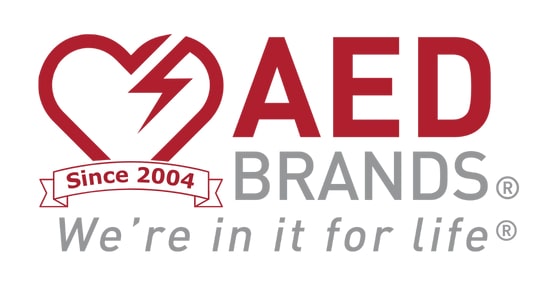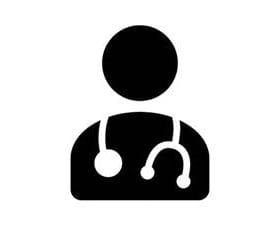What are the correct actions to take for scene safety and assessment?
Ensuring scene safety is of paramount importance for BLS (Basic Life Support) providers. This article presents five highly technical tips for BLS scene safety, with a focus on incorporating an Automated External Defibrillator (AED) into the safety procedures. By following these guidelines, BLS providers can enhance their preparedness, situational awareness, and patient threat assessment, thereby minimizing risks and optimizing patient care.
Comprehensive Preparedness
Effective scene safety begins well before the start of a shift. BLS providers should prioritize their overall preparedness, which includes physical readiness, uniform considerations, and carrying essential equipment.
By maintaining a healthy lifestyle, including adequate rest and regular exercise, providers can ensure they are physically capable of handling potential challenges.
When selecting a uniform, it is crucial to weigh the safety advantages and disadvantages of a jumpsuit versus a two-piece uniform. Considerations for equipment placement, such as securing shears/scissors and positioning stethoscopes to avoid being used against the provider, are also important. Additionally, carrying a flashlight and handheld radio at all times enhances personal safety and facilitates communication with emergency response personnel.
Observe and Assess
Developing a keen sense of observation and situational awareness is vital for BLS providers.
Apart from assessing the patient’s condition, it is essential to assess the surroundings for potential threats. Pay attention to details such as the state of parked cars, signs of a hurried entry, broken windows, or any unusual silence or commotion.
Trusting one’s intuition is crucial for identifying potential risks. This heightened level of observation ensures that providers can take appropriate precautions to safeguard themselves and their patients.
Strategic Positioning
When approaching a scene, strategic positioning can significantly impact safety. By being mindful of the door’s hinge placement, providers can position themselves in a way that minimizes risks associated with firearms.
Standing on the hinge side of the door during interactions prevents individuals from easily accessing and harming the provider. Furthermore, providers should actively identify potential exits for both patients and themselves, ensuring unobstructed escape routes if necessary.
Mentally assessing the number of people present allows for effective decision-making regarding resource allocation and personnel requirements.
Mindful Engagement
Being fully present and engaged during a call is crucial for BLS providers. By maintaining focus and attentiveness, providers can pick up on nonverbal cues and effectively communicate with patients and bystanders.
Body language can provide valuable insights into a person’s intentions or emotional state, allowing providers to anticipate and manage potentially volatile situations.
The ability to recognize signs of distress, agitation, or feelings of entrapment can help prevent escalations and improve overall scene safety.
Patient Threat Assessment:
Different types of emergencies carry varying levels of potential threats. Providers should be aware of common patterns and anticipate potential challenges associated with specific call types. Assault victims may exhibit hostility, while MVA victims could be emotionally charged due to adrenaline.
Behavioral emergency calls require extra caution, as patients may experience mood swings or paranoia that can escalate into violent behavior.
Overdose victims, upon awakening, may display aggression and agitation. Safely restraining these patients before administering Narcan can help prevent harm to themselves or others.
Assessing a sudden cardiac arrest (SCA) Victim
Assessing a sudden cardiac arrest victim requires a systematic approach to ensure proper evaluation and prompt intervention. Here are the key steps to assess an SCA victim:
Check for responsiveness: Begin by attempting to wake the victim and assess their level of consciousness. Tap their shoulders and ask loudly if they’re okay. If there is no response, the victim is unresponsive, indicating a potential SCA.
Activate emergency response: Immediately call for emergency medical services (EMS) or activate your local emergency response system. Time is critical in SCA cases, and early intervention can significantly improve the chances of survival.
Assess breathing: Quickly assess the victim’s breathing by looking for chest rise and fall, listening for breath sounds, and feeling for exhaled air. If the victim is not breathing or only gasping irregularly, it indicates a cardiac arrest, and cardiopulmonary resuscitation (CPR) should be initiated.
Check for a pulse: Perform a brief check for a pulse by feeling for the carotid artery located on the side of the neck. If you cannot detect a pulse within 10 seconds, assume there is no pulse and proceed with CPR.
Begin CPR: If the victim is unresponsive, not breathing, and has no pulse, start CPR immediately. Follow the guidelines for chest compressions and rescue breaths based on the current protocols, maintaining an adequate compression-to-ventilation ratio.
Use an AED: If an automated external defibrillator (AED) is available, promptly retrieve it and follow the device’s instructions. Apply the AED pads to the victim’s bare chest as directed, and analyze the heart rhythm. If advised, deliver a shock and resume CPR according to the AED prompts.
Remember, assessing an SCA victim requires a swift and systematic approach. Early recognition, activation of emergency services, and initiation of CPR, along with the use of an AED when available, are crucial steps that can significantly impact the victim’s chances of survival.
View cart “BLS Healthcare Provider 2-Yr Certification” has been added to your cart.



